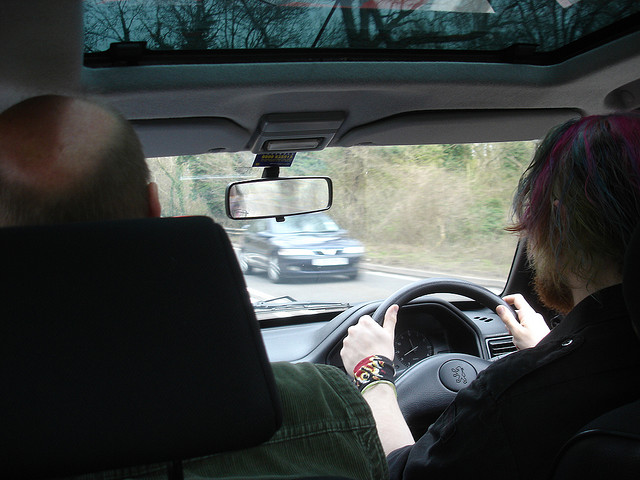The Driving Standards Agency (DSA) says it takes learners on average, 45 hours of professional tuition and 22 hours of private practice to pass their driving test. Therefore, if you are willing and able to help out a friend or family member with practice time, you will be much appreciated!
You need more than just nerves of steel to climb into a car with a learner driver. Here are a few adjectives that you might want to try on for size before you agree to supervise a learner, no matter what his/her age or relationship to you: patient, observant, vigilant, firm and calm.
If you think you can stay cool in the face of danger, then you will certainly be able to help a friend or family member save a great deal on driving instructor fees, particularly when it comes to practice time.

Before you hit the road there are some legalities to consider:
1. When you travel in a car to instruct a learner driver you are a supervisor, not a passenger, and therefore you are responsible and liable for the safety and actions of the driver and other road users.
2. The supervisor of a learner driver has to be aged over 21 and must have held a full driving licence for the type of vehicle you are using for at least three years.
3. Make sure the student driver and the car are properly insured.
4. Display L-plates (red letter on white background) of the correct size on the vehicle you and the learner driver are using.
If you are to be of good use to the learner driver you are assisting, brush up on your knowledge of road signs and required driving skills such as the all-important MSM/PSL (Mirrors-Signal-Manoeuvre/Position-Speed-Look) Routine.
It’s wise to have an amicable chat with your student before you set off during which you can both agree to some “ground rules” and how you will handle stressful situations once you are underway, particularly before you drive into traffic. This will hopefully eliminate the possibility of arguments developing en route.
You should also have an agreed route to follow, and both you and the learner should have familiarized yourselves with the route as much as possible, particularly being aware of any particular hazards or difficult situations that might be encountered.
Using Google Street View is a good way to get to know your planned route.
Make sure your planned route is comfortable for the driver and appropriate to his/her level of experience and understanding. Don’t take a complete novice into the busiest part of town in the rush hour! If the learner is out of his/her depth and can’t handle a situation, it will damage confidence and motivation.
If the learner driver you are assisting is having formal lessons from a driving school it is advisable and helpful to discuss with the instructor the best practice routes to use locally to build the learner’s skill and experience.
When giving instructions be precise and clear. For example, tell the learner to “indicate left”; don’t say “we’re going to be turning soon so we need to get into the left lane, so you need to put the indicator on now”.
Download a suite of free apps for Learner Drivers from smartdriving.co.uk.
Return to A Guide to Learning To Drive
Return to Informational Guide Index
